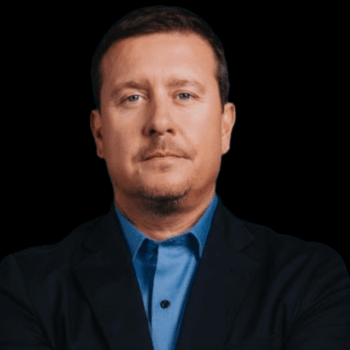Professor Gil Eyal, a Columbia University sociologist and author of The Autism Matrix, unpacks the surge in autism diagnoses since the 1980s. Has this been a biological epidemic, a shift in terminology, or a product of societal change? Eyal, whose research began in 2004 and led to his 2010 book, offered a sociologist’s lens, not a clinician’s, to navigate these questions.
Eyal pinned the rise on evolving diagnostic criteria. In 1943, Leo Kanner described autism as a severe condition, based on eleven children. By 1987, the DSM-III revised introduced a spectrum, loosening the criteria. Diagnoses spiked as parents began viewing behaviors, once quirks, as autistic traits. Eyal argued humans haven’t fundamentally changed; we’ve just renamed differences. Terms like “imbecile” or “retarded,” once clinical, have vanished, replaced by “autism” or “neurodivergence.”
I noted how modern life, fewer children per family, heightened cognitive demands like taxes or technology, sharpens scrutiny of deviations. Eyal agreed, tracing autism’s shifting meaning. Coined by Bleuler in the 1910s for excessive imagination, it now signifies developmental disability. This reframing, Eyal stressed, is a net gain. In the 1940s, Kanner’s children faced asylums or institutions, labeled schizophrenic or retarded. Autism carved a new path, offering early interventions — speech, occupational, and physical therapies — to unlock potential.
Skeptical, I questioned whether therapies, like chiropractors, after no-fault insurance, were fueled by perverse incentives. Eyal pushed back. Demand for therapies surged post-1970s deinstitutionalization, as psychiatry couldn’t meet mental health needs. Community clinics and allied professionals filled gaps. Therapists, he said, earn modest wages for grueling work, like applied behavioral analysis, which demands repetitive language training. Parents invest immense effort, driven by hope, not profit.
I wondered if schools, now with more aides than teachers, had reinstitutionalized care. Eyal rejected this. Integration — therapists in classrooms — trumps the neglect of past institutions. Yet inequities linger: poor or minority children are often tagged with intellectual disability, missing autism’s therapies. After high school, support fades, leaving adults underserved.
Globally, I pointed out, autism searches are scarce in places like Africa. Eyal cited studies from India and Morocco, noting urbanizing societies increasingly recognize autism. In traditional settings, autistic children bring stigma, isolating families. Modernization exposes, not creates, these challenges. On causes, I raised toxins, vaccines, and regression. Eyal, no causation expert, noted regressive autism, where skills vanish, is rare. Most diagnoses follow delayed speech, spotted around age two. Genetics, tied to myriad mutations, leads theories, but diagnostic shifts drive much of the increase.
I mentioned Steve Kirsch’s claim of low autism rates among Amish and Orthodox Jews, hinting at vaccine avoidance. Eyal debunked it for Orthodox Jews, citing ample cases in Israel. Isolated communities, he suggested, may skirt diagnoses by avoiding medical systems. I also noted rising gender dysphoria claims, asking about neurodivergence overlap. Eyal saw correlations, especially in girls, viewing both as ways to forge identity in a rigid world.
Eyal highlighted a divided autism community. High-functioning self-advocates, like those with Asperger’s, reject stigma and demand their voice, clashing with parents of severely autistic, often nonverbal children. RFK Jr.’s remarks about some autistic individuals never holding jobs sparked backlash from self-advocates but resonated with parents facing lifelong challenges. Eyal urged unity: parents built advocacy platforms; self-advocates show potential exists, even in severe cases, through tools like picture exchange systems.
Eyal concluded that autism isn’t one condition but many, with varied causes. Obsessing over “why” distracts from “what now.” Resources must prioritize those with the greatest need — children and families grappling with severe autism — while fostering collaboration across the spectrum. His perspective left me grappling with the balance: how much is new, how much is redefinition, and how best to support those affected.
The Autism Matrix
Please see my recent Substack Unraveling Autism’s Surge; Genetics, Environment, and the Expanding Diagnostic Net.
Outline of Gil Eyal’s Top Thoughts of Interest
- Sociological Perspective, Not Clinical Observation
- Eyal is a sociologist, not a clinician, analyzing autism through diagnostic trends and societal impacts, not direct patient interaction.
- He observed autism clinics (e.g., in New Jersey) but relied on experts for specific categorizations like PDD-NOS or Asperger’s.
- Net Benefit of Autism Diagnosis
- Autism’s redefinition as a developmental disability, not mental illness or retardation, offers hope through early intervention (speech, occupational therapy).
- Unlike past institutionalization, autism diagnoses enable integration and potential development, a significant improvement over asylums or neglect.
- Diagnostic Shift as Primary Driver
- The 1987 DSM-III revised broadened autism into a spectrum, increasing diagnoses by reclassifying behaviors once labeled differently.
- This shift, not biological change, accounts for much of the “epidemic,” with parents now seeing quirks as autistic traits.
- Fractures in the Autism Community
- High-functioning self-advocates (e.g., Asperger’s) emphasize neurodiversity and reject stigma, clashing with parents of severely autistic, often nonverbal children.
- RFK Jr.’s comments on joblessness highlighted this schism: self-advocates felt misrepresented, while some parents saw truth in the challenges of severe autism.
- Need for Unity and Better Questions
- Eyal advocates collaboration: parents created advocacy platforms, while self-advocates demonstrate potential (e.g., communication via picture exchange systems).
- Understanding autism’s diverse landscape — severe to high-functioning — is key to framing effective questions and directing resources to those with the greatest need.
- Global and Societal Context
- Autism is less visible in less urbanized regions (e.g., Africa) due to stigma or lack of medical access, not absence.
- Modern societies’ complex demands (e.g., cognitive tasks) amplify autism’s visibility, unlike simpler, agrarian settings.
- Resource Inequities and Gaps
- Poor or minority children are often labeled with intellectual disability, missing autism’s therapies.
- Support drops post-high school, leaving adults with autism underserved, akin to those with intellectual disabilities.
Discover more from Randy Bock MD PC
Subscribe to get the latest posts sent to your email.

























